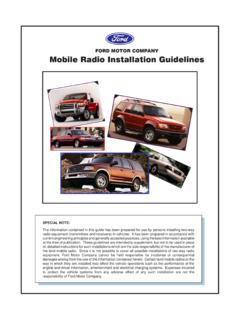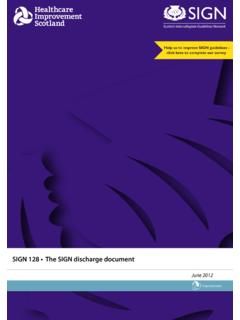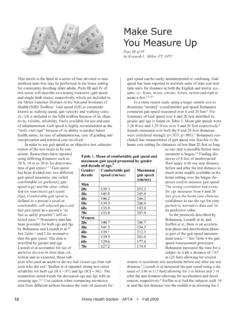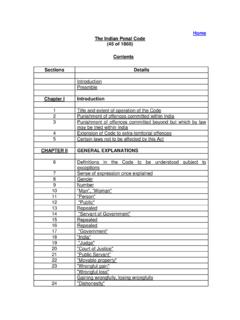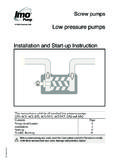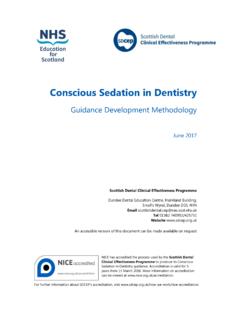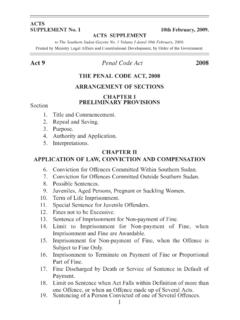Transcription of Electromagnetic Compatibility Specification For …
1 General Specification FMC1278. Electrical/Electronic Electromagnetic Compatibility Specification For Electrical/Electronic Components and Subsystems Foreword This engineering Specification addresses Electromagnetic Compatibility (EMC) requirements for electrical/electronic (E/E) components and subsystems for Ford Motor Company (FMC). This Specification is the direct link from RQT-002700-000417 (Legacy Requirement ARL-09-0466). These requirements have been developed to assure compliance with present and anticipated regulations in addition to customer satisfaction regarding the EMC of vehicle E/E systems. This Specification replaces FMC1278 is applicable for all 12 and 24 volt DC E/E components/subsystems that are planned for use on 2020 Ford vehicle programs and beyond in addition to E/E component/subsystems whose commercial agreements are signed after July 1, 2015.
2 FMC1278 is available for download from the Ford Standards Management System (FSMS) in addition to Corrections and/or editorial updates to this Specification will be made as required and without prior notification to the user. It is recommended that the user verify they have the latest version of the Specification prior to application to their E/E component/subsystem. Differences between this Specification and its prior release may be found in Annex I. October 07, 2016 Printed copies are uncontrolled FMC1278. Table of Contents: Scope ..3. Abbreviations, Acronyms, Definitions, & Symbols ..5. Functional Classification And Functional Performance Status ..8. Common Test Requirements ..9. Additional Requirements ..11. Requirement Radiated Rf Emissions: RE Conducted Rf Emissions: CE 420 ..24. Conducted Emissions: CE 421 ..27. Conducted Transient Emissions: CE 410.
3 30. Rf Immunity: RI 112, RI 114, RI Magnetic Field Immunity: RI 140 ..52. Coupled Immunity: RI 130 ..56. Coupled Immunity: RI 150 ..59. Immunity From Continuous Power Line Disturbances: CI 210 ..61. Immunity From Transient Disturbances: CI 220 ..64. Immunity From Transient Disturbances: CI 221 ..68. Immunity From Load Dump: CI 222 ..70. Immunity From Power Cycling: CI 230 ..73. Immunity From Power Cycling: CI 231 ..77. Immunity To Ground Voltage Offset: CI 250 ..78. Immunity To Voltage Dropout: CI 260 ..84. Immunity To Voltage Overstress: CI Electrostatic Discharge: CI 280 ..89. Annex A (Normative): Field Calibration Procedure For Alse Method Bands 7 And 8) ..95. Annex B (Normative): Modulation & Leveling Requirements For Radiated Immunity ..100. Annex C (Normative): RI115 Characterization Procedures ..102. Annex D (Normative): CI 220, CI 221, C222 Transient Waveform Annex E (Normative): Transient Test Generator (Pulses A1, A2 And C).
4 119. Annex F (Normative): Load Simulator Requirements ..122. Annex G (Normative): RI 130, RI 150 Test Fixture And Application ..126. Annex H (Normative): CI 220 & CI 222 Transient Waveform Application ..128. Annex I (Normative): Specification Updates ..130. Copyright Ford Motor Company All Rights Reserved Page 2 of 132. October 07, 2016. FMC1278. Scope This engineering Specification defines the Electromagnetic Compatibility (EMC) requirements, test methods and test procedures for electrical/electronic (E/E) components and subsystems used by Ford Motor Company (FMC) including associated vehicle brands. Purpose of the Specification The purpose of this engineering Specification is to ensure vehicle Electromagnetic Compatibility . This Specification presents EMC requirements and test methods that have been developed for design verification of E/E components and subsystems independent of the vehicle.
5 Successful completion of this verification directly supports FMC's Production Product Acceptance Process (PPAP). Verification testing must be successfully completed before VP MRD. See FMC1279 for detailed requirements. Vehicle Level Requirements In addition to meeting the requirements specified herein, E/E components and subsystems, when installed in the vehicle, shall also comply with all relevant vehicle level EMC requirements. The supplier may contact the FMC EMC department for details concerning these requirements (these requirements are not publically available). Verification testing to these requirements is performed by FMC. Additional component, subsystem, and vehicle level EMC requirements may be imposed reflecting special conditions in their target markets. The component or subsystem supplier should verify that any additional requirements, or modifications to the requirements delineated herein shall be included in the supplier's statement of work and the component/subsystem's engineering Specification .
6 Use of this Specification The requirements and test methods in this engineering Specification are based on international standards wherever possible. If international standards do not exist, military, and internal corporate standards are used. Under some circumstances, unique requirements and test methods are presented that experience has shown to better represent the vehicle Electromagnetic environment. Refer to the definitions in Section for clarification of terms. Should a conflict exist between this Specification and any of the referenced documents, the requirements of this Specification shall prevail. These requirements do not supersede any applicable regulatory requirements. Where such requirements exist, separate validation testing may be required. This Specification applies to all components and subsystems that reference EMC in their engineering Specification .
7 Components may be referred to in this Specification as a component, device, module, motor, product or DUT (device under test). The following steps shall be taken by the FMC Design and Release (D&R) activity and their supplier for assuring EMC. compliance of their component or subsystem: 1. Provide the supplemental information needed to classify the E/E component/subsystem functional importance classification(s) (refer to section 4). 2. Identify which tests are applicable (refer to section 7). 3. Identify operating modes and acceptance criteria specific to the component or subsystem. 4. Develop an EMC test plan per section in FMC1279 (formally EMC-P-2009). 5. Perform testing at a FMC recognized test facility. 6. Submit the test results to the FMC EMC department. See section for reporting requirements. 7. FMC reviews and assesses the test results and verify compliance.
8 It's important to emphasize that the FMC D&R activity and their supplier (not the FMC EMC department) are responsible for determining the operating modes and acceptance criteria for their component or subsystem (step 3). The FMC D&R activity is also responsible for verifying that the requirements delineated in this Specification are met. The supplier is responsible for performing the verification testing in accordance with the requirements of this Specification . Copyright Ford Motor Company All Rights Reserved Page 3 of 132. October 07, 2016. FMC1278. The FMC EMC department reserves the right to perform audit testing or witness supplier design verification testing on sample parts in order to verify compliance with this Specification . Compliance to these EMC requirements shall be determined by the FMC after review of the test results generated by the test laboratory.
9 The supplier may not self-certify compliance to these specifications. See section for additional detail concerning this requirement. Special Circumstances The requirements specified herein apply to all E/E components and subsystems. However, under special circumstances ( unique packaging environment), selected requirements may be revised or waived. These revisions or waivers are only permissible after a joint review and documented agreement between the FMC functional owner and the FMC EMC. department. Those revisions/waivers must be also documented in the affected component or subsystem hardware Specification prior to commencement of any sign-off related testing. Agreed to revisions or waivers do not relieve the component or subsystem from meeting the vehicle level requirements (see section ). Additional Information E/E component or subsystem testing to the requirements of this Specification represents an empirical risk analysis of component/subsystem performance versus derived approximations to known environmental threats and customer satisfaction requirements.
10 The development of this Specification is based on extensive experience in achieving correlation to expected vehicle performance with a high level of predictability. However, EMC testing, by its nature, is subject to similar variation as mechanical testing. Because of coupling variability and measurement uncertainty, correlation between component/subsystem level performance and final performance in the complete vehicle cannot be exact. In order to maintain a competitive and quality product, vehicle EMC testing will be performed to evaluate overall integrated system performance. However, vehicle level analysis and testing is not a substitute for component/subsystem conformance to this Specification . This Specification does not include any information regarding component/subsystem design required to meet the requirements presented herein.



